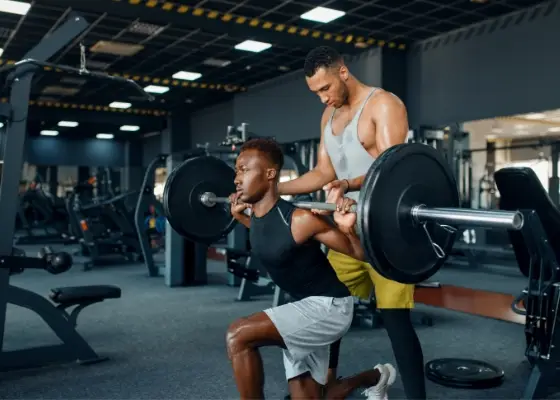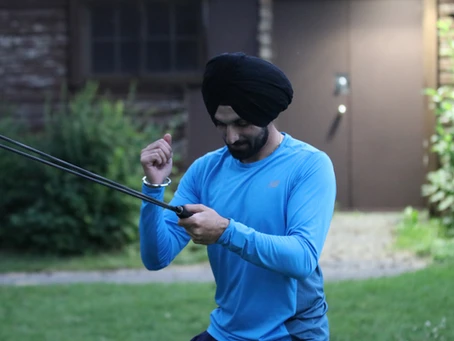
- 587-284-7854
- sdhatt@dhattfit.com
- Mon - Fri 09:00-17:00

Picture this: You’ve just wrapped up a grueling, yet safe, workout at DhattFit. You’ve pushed your limits, and now your muscles are protesting. You’re sore, really sore. You want to kill me. But then you remember the old saying “No pain, no gain,” right? That soreness must be a sign that your muscles are growing. Or is it?
When I started my fitness journey, this burning question led me on a quest to understand the science behind muscle soreness and its relationship with muscle development. My journey led me to an enlightening article by fitness expert Brad Schoenfeld.
In his article, Schoenfeld explains that the soreness we feel, known as Delayed Onset Muscle Soreness (DOMS), is a result of microscopic damage to our muscle fibers during exercise. But here’s the twist: this muscle damage, while often associated with muscle growth, is not a direct indicator of it.
Schoenfeld’s article reveals that muscle growth can occur without the presence of muscle soreness. The processes involved in muscle growth – muscle damage, inflammation, and protein synthesis – can occur independently of one another. This means you can experience muscle growth without muscle damage or inflammation, and vice versa.
One of the key players in muscle growth is protein synthesis. When we exercise, our bodies increase the rate of protein synthesis and decrease the rate of protein degradation. This leads to a net gain in muscle protein, which over time, results in muscle growth.
In case you’re wondering, protein synthesis is like building a wall with bricks (proteins), and protein degradation is like removing old or damaged bricks. Muscle growth happens when you’re building (synthesizing) more bricks than you’re removing (degrading).
So, what’s the final takeaway from this? While muscle soreness can be part of the muscle growth process, it’s not a reliable indicator of muscle development. Instead of focusing on the soreness, we should focus on maintaining a consistent exercise routine and a balanced diet to support muscle growth.
This information was taken from and article by Brad Schoenfeld’s article, “Is Muscle Soreness a Valid Indicator of Muscular Adaptations?” I highly recommend giving it a read for a deeper dive into the science behind muscle soreness and growth.
Hi, I'm Sukh Dhatt, founder of DhattFit, where personalized, science-based training helps you achieve lasting health and fitness results.


Sign up our newsletter to get update information about gym, fitness or promotion.
